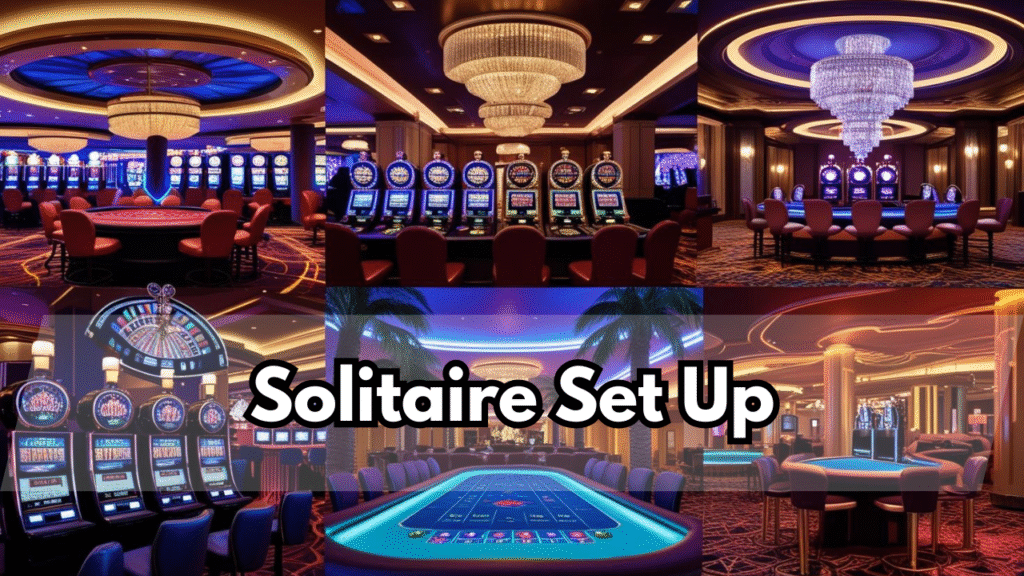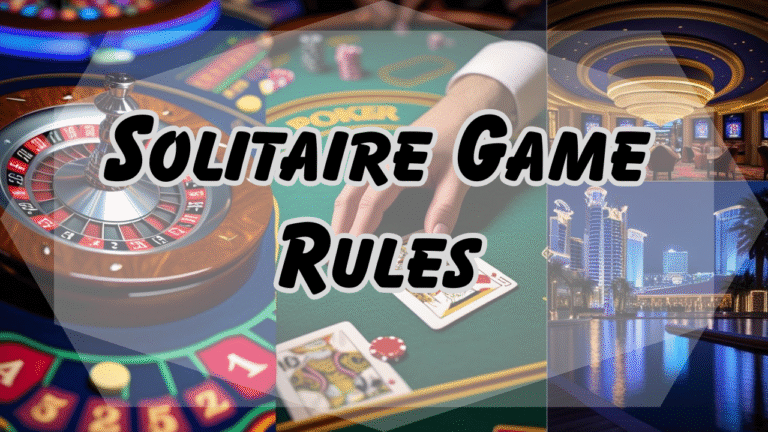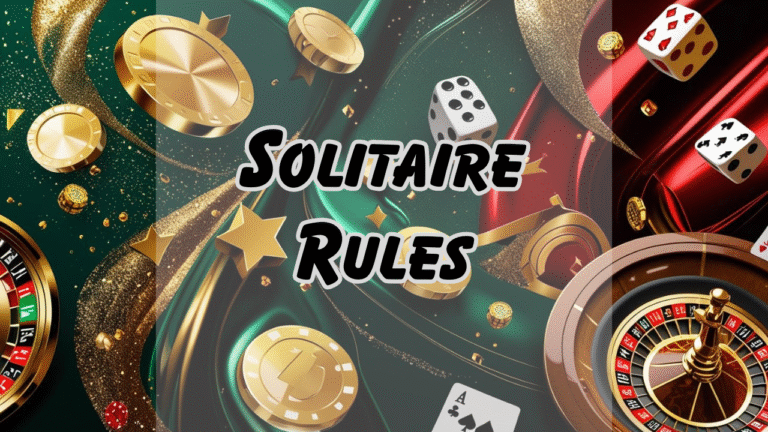Solitaire Set Up: We tend to overlook the subtle brilliance of Solitaire amidst the flurry of complex multiplayer offerings and fast-paced action games. This classic card game has been around for over a century, and in that time it has entertained tens of millions, sharpened minds, and offered contemplative concentration. Whether you’re just starting out or are a seasoned player looking to brush up, the first and most crucial step to becoming a master at Solitaire is understanding the setup.

In order to get the most of every deal, this guidebook gives you a professional study of the Solitaire setup in 5 simple steps, along with helpful methods, the cognitive benefits of playing, and answers to frequently asked problems.
Why Solitaire Is Important: The Benefits of Engaging in the Game
We need to answer the question, “Why Solitaire?” before diving into the technical details.

Playing solitaire is more of a hobby than a pastime. Analyses of the game and research indicate that Solitaire can significantly improve:
- Intelligence, including the ability to remember, recognize patterns, and organize one’s thoughts.
- Lessening anxiety by strengthening self-awareness and mastery.
- The ability to be patient and make good decisions because of the methodical pace and rule-driven structure.
A lot of people who are good at solitaire play it every day to keep their minds active and sharp. Allow me to provide you with a comprehensive guide to setting up your Solitaire game for maximum success.

Five Easy Steps to Get Solitaire Started (Original Klondike Version)
Get to Know the Deck
One regular deck of 52 cards (without jokers) will do. To make sure it’s completely random, shuffle the cards well. This establishes the ground rules for the game’s fairness and unpredictability, which are essential to Solitaire’s reward and challenge.
Build the primary game space (tableau)
Sort the deck into seven columns:
Column 1: 1 card
Column 2: 2 cards
Column 3: 3 cards
Column 4: 4 cards
Column 5: 5 cards
Column 6: 6 cards
Column 7: 7 cards
Only the highest card in each column should be visible to you. Turn over the remaining ones. This constitutes the tableau, the primary battleground where your approach is implemented.
Designate the piles of stock and waste.
Set aside the remaining twenty-four cards with their backs to them.This constitutes your inventory. When you play cards from your stock, usually three at a time, they go into the waste pile, which stores them for later use.
Lay the Groundwork
Leaving room above the tableau is enough to accommodate four foundation piles. All of the cards in this deck will be of the same suit, from ace to king. The last goal is to build all four foundations and clear the tableau.
Game Ready
You are ready to go once you have organized the tableau, inventory, trash, and base areas. Start looking for moves, flip over cards in the tableau if you can, and draw from the stock pile if you don’t have any plays.
Deep Dive: Solitaire Setup Expertise
Making sure everything is in order before the game begins does more than just follow the rules; it sets the tone for success. A neat and organized setup allows for focused tactical planning and avoids confusion in the middle of the game. In the preparation phase, skilled players often look for high-leverage plays, such revealing face-down cards from deep in the tableau or finding Aces early on.
Frequently Asked Questions: Solitaire Set Up
Can I use jokers in solitaire?
No. Standard Solitaire (Klondike) does not involve the use of Jokers. Just one standard 52-card deck will do.
What am I to do if I make a mistake during setup?
It’s more beneficial to start over. The foundation of meaningful gameplay and challenge in solitaire is an equal and random setting.
Whether or not the same configuration on a computer can run Solitaire.
Yes. With the addition of auto-move and tip systems, computer versions faithfully recreate the actual arrangement.
What is the average duration of a game of Solitaire?
Usually, it takes around ten to fifteen minutes. The length of the game, however, is entirely up to you and your decisions.
Which piece of advice would you provide to someone just starting out?
Get rid of the face-down cards from the tableau right away. That is the area where your game’s hidden strength lies.
Conclusion: Why Solitaire Is Always a Good Choice
Underneath Solitaire’s seemingly harmless surface is a game of immense strategic value. When done correctly, the setup is a roadmap to engaging in contemplative, thought-provoking gaming. Not only does it train your brain, but it also encourages the kind of calm, deliberate thinking that is so rare in this hyper-digital world.

Mastering the Solitaire setup will lead to consistent wins and long-term benefit, whether you play to relax or to sharpen your intellect.
So, throw caution to the wind, set the atmosphere, and unleash your strategy.
Is this more for print, social media, or search engine optimization (SEO) for your site?



